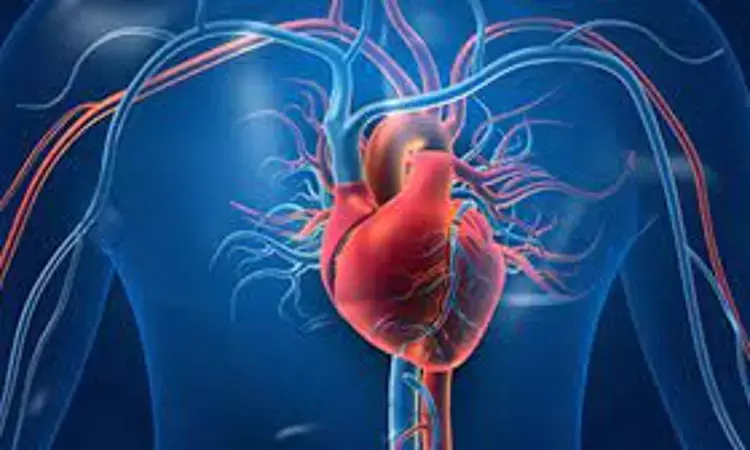- Home
- Medical news & Guidelines
- Anesthesiology
- Cardiology and CTVS
- Critical Care
- Dentistry
- Dermatology
- Diabetes and Endocrinology
- ENT
- Gastroenterology
- Medicine
- Nephrology
- Neurology
- Obstretics-Gynaecology
- Oncology
- Ophthalmology
- Orthopaedics
- Pediatrics-Neonatology
- Psychiatry
- Pulmonology
- Radiology
- Surgery
- Urology
- Laboratory Medicine
- Diet
- Nursing
- Paramedical
- Physiotherapy
- Health news
- Fact Check
- Bone Health Fact Check
- Brain Health Fact Check
- Cancer Related Fact Check
- Child Care Fact Check
- Dental and oral health fact check
- Diabetes and metabolic health fact check
- Diet and Nutrition Fact Check
- Eye and ENT Care Fact Check
- Fitness fact check
- Gut health fact check
- Heart health fact check
- Kidney health fact check
- Medical education fact check
- Men's health fact check
- Respiratory fact check
- Skin and hair care fact check
- Vaccine and Immunization fact check
- Women's health fact check
- AYUSH
- State News
- Andaman and Nicobar Islands
- Andhra Pradesh
- Arunachal Pradesh
- Assam
- Bihar
- Chandigarh
- Chattisgarh
- Dadra and Nagar Haveli
- Daman and Diu
- Delhi
- Goa
- Gujarat
- Haryana
- Himachal Pradesh
- Jammu & Kashmir
- Jharkhand
- Karnataka
- Kerala
- Ladakh
- Lakshadweep
- Madhya Pradesh
- Maharashtra
- Manipur
- Meghalaya
- Mizoram
- Nagaland
- Odisha
- Puducherry
- Punjab
- Rajasthan
- Sikkim
- Tamil Nadu
- Telangana
- Tripura
- Uttar Pradesh
- Uttrakhand
- West Bengal
- Medical Education
- Industry
Liberal Transfusion Strategy in MI with anaemia: No benefits found

Liberal Transfusion Strategy fails to reduce risk of recurrence and death in MI patients with anemia suggests a new study published in The New England Journal of Medicine.
A strategy of administering a transfusion only when the hemoglobin level falls below 7 or 8 g per deciliter has been widely adopted. However, patients with acute myocardial infarction may benefit from a higher hemoglobin level. In this phase 3, interventional trial, we randomly assigned patients with myocardial infarction and a hemoglobin level of less than 10 g per deciliter to a restrictive transfusion strategy (hemoglobin cutoff for transfusion, 7 or 8 g per deciliter) or a liberal transfusion strategy (hemoglobin cutoff, <10 g per deciliter). The primary outcome was a composite of myocardial infarction or death at 30 days. RESULTS:A total of 3504 patients were included in the primary analysis. The mean (±SD) number of red-cell units that were transfused was 0.7±1.6 in the restrictive-strategy group and 2.5±2.3 in the liberal-strategy group. The mean hemoglobin level was 1.3 to 1.6 g per deciliter lower in the restrictive-strategy group than in the liberal-strategy group on days 1 to 3 after randomization. A primary-outcome event occurred in 295 of 1749 patients (16.9%) in the restrictive-strategy group and in 255 of 1755 patients (14.5%) in the liberal-strategy group Death occurred in 9.9% of the patients with the restrictive strategyand in 8.3% of the patients with the liberal strategy. In patients with acute myocardial infarction and anemia, a liberal transfusion strategy did not significantly reduce the risk of recurrent myocardial infarction or death at 30 days. However, potential harms of a restrictive transfusion strategy cannot be excluded
Jeffrey L. Carson, Maria Mori Brooks, Paul C. Hébert, Shaun G. Goodman, Marnie Bertolet, Simone A. Glynn, Bernard R. Chaitman, Tabassome Simon, Renato D. Lopes, Andrew M. Goldsweig, Andrew P. DeFilippis, J. Dawn Abbott. Restrictive or Liberal Transfusion Strategy in Myocardial Infarction and Anemia. N Engl J Med 2023; 389:2446-2456. DOI: 10.1056/NEJMoa2307983
Keywords:
Liberal, Transfusion, Strategy, fails, reduce, risk, recurrence, death, MI patients, anemia, The New England Journal of Medicine, Jeffrey L. Carson, Maria Mori Brooks, Paul C. Hébert, Shaun G. Goodman, Marnie Bertolet, Simone A. Glynn, Bernard R. Chaitman, Tabassome Simon, Renato D. Lopes, Andrew M. Goldsweig, Andrew P. DeFilippis, J. Dawn Abbott
Dr. Shravani Dali has completed her BDS from Pravara institute of medical sciences, loni. Following which she extensively worked in the healthcare sector for 2+ years. She has been actively involved in writing blogs in field of health and wellness. Currently she is pursuing her Masters of public health-health administration from Tata institute of social sciences. She can be contacted at editorial@medicaldialogues.in.
Dr Kamal Kant Kohli-MBBS, DTCD- a chest specialist with more than 30 years of practice and a flair for writing clinical articles, Dr Kamal Kant Kohli joined Medical Dialogues as a Chief Editor of Medical News. Besides writing articles, as an editor, he proofreads and verifies all the medical content published on Medical Dialogues including those coming from journals, studies,medical conferences,guidelines etc. Email: drkohli@medicaldialogues.in. Contact no. 011-43720751


